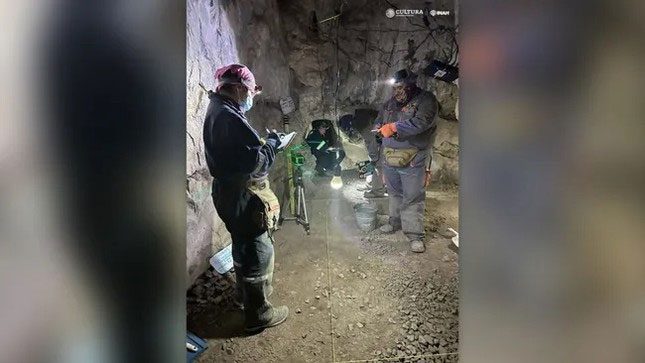Archaeologists have discovered the remains of two teenagers and an infant in the chamber of a cave, but it is still unclear how they died.

During the 2023-2024 field research season, archaeologists found ancient human remains, fibers, and artificial tools in a cave in Nuevo León, Mexico. (Photo: Moisés Valadez)
The 2,500-year-old grave containing three individuals, buried with various types of grave goods, has just been uncovered inside a cave in northeastern Mexico.
The National Institute of Anthropology and History of Mexico (INAH) stated in a release that an analysis of the skeletons revealed that two of the individuals were teenagers and one was an infant.
The remains were found fragmented, possibly having been ritualistically dismembered. However, a detailed analysis of the bones has yet to be conducted.
Moisés Valadez Moreno, an archaeologist with INAH who excavated the remains, noted that the deceased were also buried with beads made from shell, some sourced from over 300 kilometers to the east, towards the Gulf of Mexico.
The statement indicated that the remains are dated to approximately 3,000 to 2,500 years ago. This period includes what archaeologists sometimes refer to as the “Preclassic period” in Mexico, a time characterized by trade and various lifestyles, including hunting, foraging, and agriculture, as noted by historians Alfredo López Austin and Leonardo López Luján in their book “The Indigenous Past of Mexico” (University of Oklahoma Press, 2001).


















































